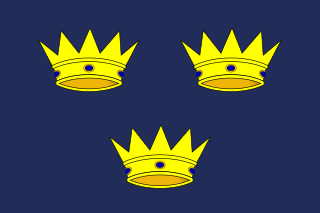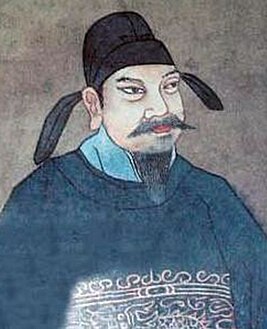Events
820
By place
Byzantine Empire
- December 25 – Emperor Leo V (the Armenian) is assassinated by conspirators in the Hagia Sophia, at Constantinople. Though unarmed, he fights back fiercely but dies of his wounds. He is succeeded by Michael II, the commander of the palace guard ( excubitores ). Leo's family (including his mother and his wife Theodosia) are exiled to monasteries in Princes' Islands. [1]
December 25 is the 359th day of the year in the Gregorian calendar. Six days remain until the end of the year.

Leo V the Armenian was Emperor of the Byzantine Empire from 813 to 820. A senior general, he forced his predecessor, Michael I Rangabe, to abdicate and assumed the throne. He ended the decade-long war with the Bulgars, and initiated the second period of Byzantine Iconoclasm. He was assassinated by supporters of Michael the Amorian, one of his most trusted generals, who succeeded him on the throne.

Hagia Sophia is the former Greek Orthodox Christian patriarchal cathedral, later an Ottoman imperial mosque and now a museum in Istanbul, Turkey. Built in AD 537 at the beginning of the Middle Ages, it was famous in particular for its massive dome. It was the world's largest building and an engineering marvel of its time. It is considered the epitome of Byzantine architecture and is said to have "changed the history of architecture".
Ireland
- Fedelmid mac Crimthainn assumes the kingship as ruler of Munster (modern Ireland).
Fedelmid mac Crimthainn was the King of Munster between 820 and 846. He was numbered as a member of the Céli Dé, an abbot of Cork Abbey and Clonfert Abbey, and possibly a bishop. After his death, he was later considered a saint in some martyrologies.

Munster is one of the provinces of Ireland, in the south west of Ireland. In early Ireland, the Kingdom of Munster was one of the kingdoms of Gaelic Ireland ruled by a "king of over-kings". Following the Norman invasion of Ireland, the ancient kingdoms were shired into counties for administrative and judicial purposes. In later centuries, local government legislation has seen further sub-division of the historic counties.

Ireland is an island in the North Atlantic. It is separated from Great Britain to its east by the North Channel, the Irish Sea, and St George's Channel. Ireland is the second-largest island of the British Isles, the third-largest in Europe, and the twentieth-largest on Earth.
China
- Emperor Xian Zong dies from poisoning (due to medicines), after a 14-year reign. He is succeeded by his son Mu Zong, as ruler of the Tang Dynasty.

Emperor Xianzong of Tang, personal name Li Chun, né Li Chun (李淳), was an emperor of the Chinese Tang Dynasty. He was the eldest son of Emperor Shunzong, who reigned for less than a year in 805 and who yielded the throne to him late that year.

Medicine is the science and practice of establishing the diagnosis, prognosis, treatment, and prevention of disease. Medicine encompasses a variety of health care practices evolved to maintain and restore health by the prevention and treatment of illness. Contemporary medicine applies biomedical sciences, biomedical research, genetics, and medical technology to diagnose, treat, and prevent injury and disease, typically through pharmaceuticals or surgery, but also through therapies as diverse as psychotherapy, external splints and traction, medical devices, biologics, and ionizing radiation, amongst others.

Emperor Muzong of Tang, personal name Li Heng, né Li You (李宥), was an emperor of the Tang Dynasty of China. He reigned from 820 to 824. Emperor Muzong was the son of Emperor Xianzong. He was created crown prince in 812 during the reign of Emperor Xianzong and, after Emperor Xianzong was allegedly assassinated by a eunuch, Li Heng was proclaimed emperor in 820.
== {{dr|y|y|{{{year}}}0|{{{1}}}|n{{#ifexpr:{{{year}}}<10|a}}}} == {{trim|{{transcluded-section|{{dr|y|y|{{{year}}}0|{{{1}}}|n{{#ifexpr:{{{year}}}<100|a}}}}}} {{#section-h::{{dr|y|y|{{{year}}}0|{{{1}}}|n{{#ifexpr:{{{year}}}<100|a}}}}|Events}}}} == {{dr|y|y|{{{year}}}0|{{{1}}}|n{{#ifexpr:{{{year}}}<10|a}}}} == {{trim|{{transcluded-section|{{dr|y|y|{{{year}}}0|{{{1}}}|n{{#ifexpr:{{{year}}}<100|a}}}}}} {{#section-h::{{dr|y|y|{{{year}}}0|{{{1}}}|n{{#ifexpr:{{{year}}}<100|a}}}}|Events}}}} == {{dr|y|y|{{{year}}}0|{{{1}}}|n{{#ifexpr:{{{year}}}<10|a}}}} == {{trim|{{transcluded-section|{{dr|y|y|{{{year}}}0|{{{1}}}|n{{#ifexpr:{{{year}}}<100|a}}}}}} {{#section-h::{{dr|y|y|{{{year}}}0|{{{1}}}|n{{#ifexpr:{{{year}}}<100|a}}}}|Events}}}} == {{dr|y|y|{{{year}}}0|{{{1}}}|n{{#ifexpr:{{{year}}}<10|a}}}} == {{trim|{{transcluded-section|{{dr|y|y|{{{year}}}0|{{{1}}}|n{{#ifexpr:{{{year}}}<100|a}}}}}} {{#section-h::{{dr|y|y|{{{year}}}0|{{{1}}}|n{{#ifexpr:{{{year}}}<100|a}}}}|Events}}}} == {{dr|y|y|{{{year}}}0|{{{1}}}|n{{#ifexpr:{{{year}}}<10|a}}}} == {{trim|{{transcluded-section|{{dr|y|y|{{{year}}}0|{{{1}}}|n{{#ifexpr:{{{year}}}<100|a}}}}}} {{#section-h::{{dr|y|y|{{{year}}}0|{{{1}}}|n{{#ifexpr:{{{year}}}<100|a}}}}|Events}}}} == {{dr|y|y|{{{year}}}0|{{{1}}}|n{{#ifexpr:{{{year}}}<10|a}}}} == {{trim|{{transcluded-section|{{dr|y|y|{{{year}}}0|{{{1}}}|n{{#ifexpr:{{{year}}}<100|a}}}}}} {{#section-h::{{dr|y|y|{{{year}}}0|{{{1}}}|n{{#ifexpr:{{{year}}}<100|a}}}}|Events}}}} == {{dr|y|y|{{{year}}}0|{{{1}}}|n{{#ifexpr:{{{year}}}<10|a}}}} == {{trim|{{transcluded-section|{{dr|y|y|{{{year}}}0|{{{1}}}|n{{#ifexpr:{{{year}}}<100|a}}}}}} {{#section-h::{{dr|y|y|{{{year}}}0|{{{1}}}|n{{#ifexpr:{{{year}}}<100|a}}}}|Events}}}} == {{dr|y|y|{{{year}}}0|{{{1}}}|n{{#ifexpr:{{{year}}}<10|a}}}} == {{trim|{{transcluded-section|{{dr|y|y|{{{year}}}0|{{{1}}}|n{{#ifexpr:{{{year}}}<100|a}}}}}} {{#section-h::{{dr|y|y|{{{year}}}0|{{{1}}}|n{{#ifexpr:{{{year}}}<100|a}}}}|Events}}}} == {{dr|y|y|{{{year}}}0|{{{1}}}|n{{#ifexpr:{{{year}}}<10|a}}}} == {{trim|{{transcluded-section|{{dr|y|y|{{{year}}}0|{{{1}}}|n{{#ifexpr:{{{year}}}<100|a}}}}}} {{#section-h::{{dr|y|y|{{{year}}}0|{{{1}}}|n{{#ifexpr:{{{year}}}<100|a}}}}|Events}}}}










